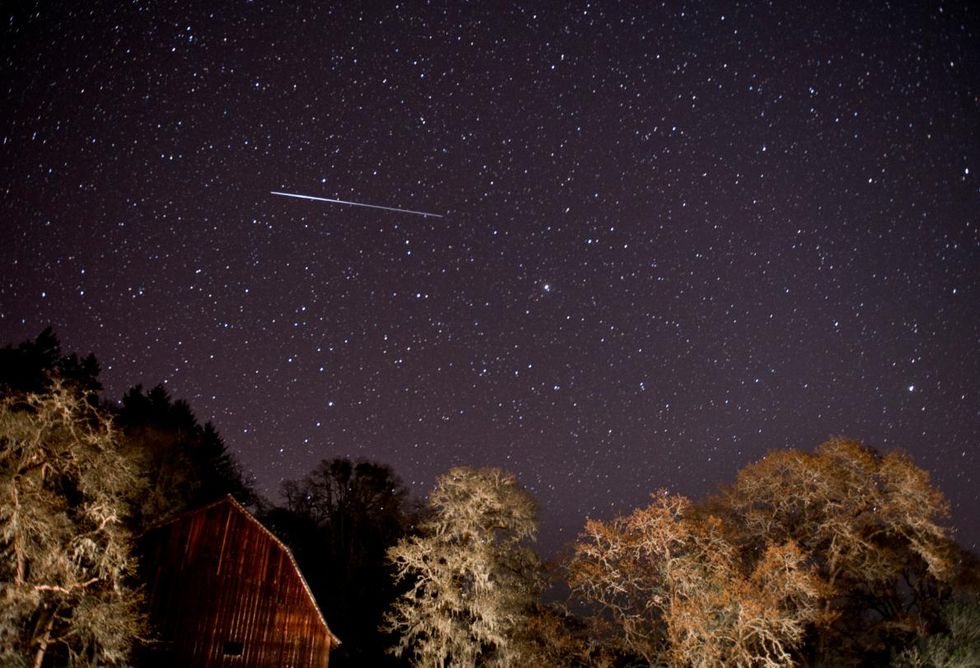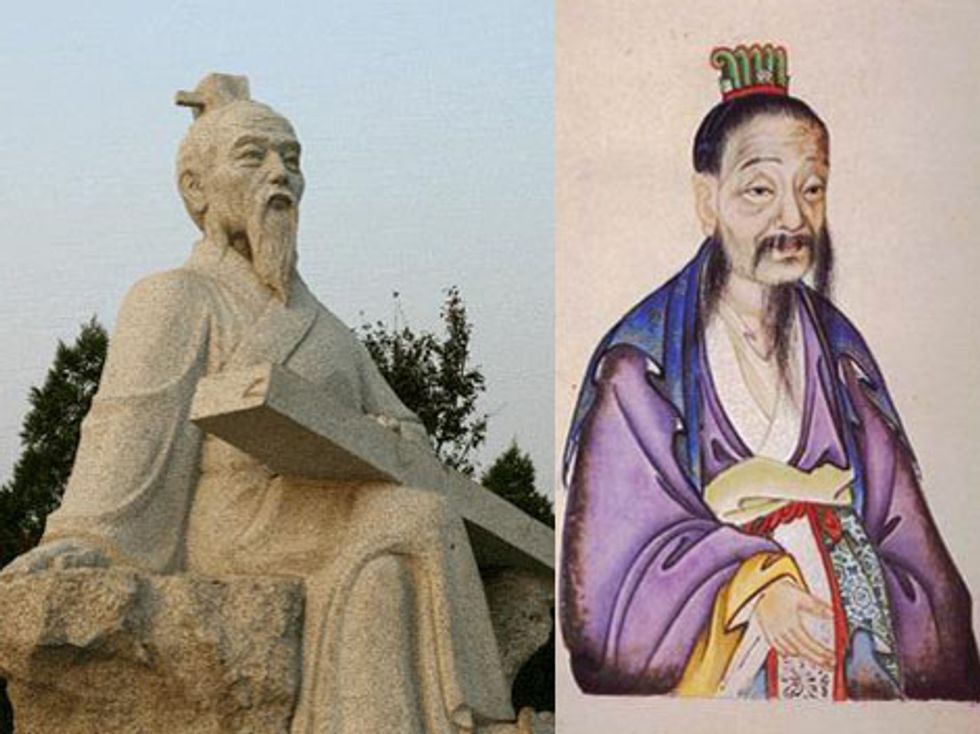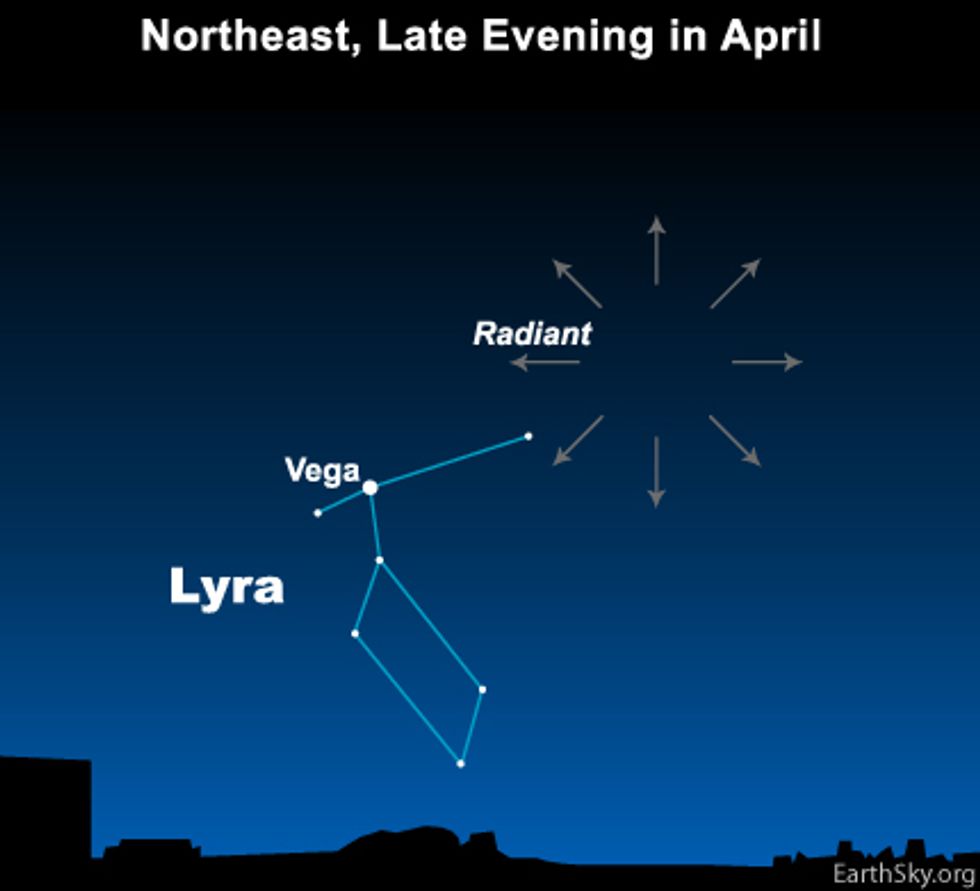Exciting events are afoot in your local cosmological neighborhood this weekend—and I don't just mean Earth Day. At this moment, our planet is crossing through the orbital path of Comet Thatcher, and you know what comes with comets: meteors. April 22nd is commonly known among astronomers as the peak of the Lyrid meteor shower, one of the oldest known meteor showers in recorded history.
That isn’t to say we’ll get to see Comet Thatcher itself—not unless you’re still around in 2276. (If you are, you’ve got attachment problems.) What we will see is the remains of Comet Thatcher’s dust particles burning up as they get roped into the gravitational pull of Earth’s atmosphere, creating an impressive show of shooting stars.
And when I say the Lyrid meteor shower is old, I mean reallyold. The earliest recording of the shower was in 687 B.C., found in the ancient Chinese text Zho Zuan (左傳). The Zho Zuan carries literary significance for being the oldest known narrative work in Chinese history, but it is also important for mentioning a meteor shower that astronomers today have linked to the Lyrid shower. A section of the text reads: "at night, fixed stars are invisible, at midnight, stars dropped down like rain" (theday.com).
(Pictured above: a Chinese dude named Zuo Qiuming who may have been partly responsible for writing part of the Zho Zhuan MAYBE. But probably not.)
We may not have the luck to see as many meteors as the ancient Chinese, but as a matter of fact, you never know. In the years 1922 and 1982, astronomers recorded a total of 90 meteors per hour, and in 1803 witnesses clocked in a total of 700 meteors per hour. A journalist in Richmond, Virginia, wrote an account of the event:
"Shooting stars [were] observed on Wednesday morning last at Richmond and its vicinity, in a manner that alarmed many, and astonished every person that beheld it. From one until three in the morning, those starry meteors seemed to fall from every point in the heavens, in such numbers as to resemble a shower of sky rockets..." (nasa.gov)
Now don’t get your hopes up too high: these meteor “storms” fall pretty consistently around a 60 year cycle, and the next one will probably not occur until 2042. (Which, considering that I am writing in a student-run newspaper, means that most my readers will probably still be alive! Sorry…was that too morbid?) For this year we should probably expect an average of 10-20 meteors per hour—which is still pretty good. Nonetheless, meteor showers are notoriously unpredictable: around 100 per hour were recorded in Japan in 1945. So be prepared for a spectacle in any case. (earthsky.org)
But, O inquisitive reader, you will ask: “thou wise one, if it be true that this shower cometh by Comet Thatcher, why doth the astronomers christen it the Lyrid meteor shower?” Great question, although you really didn't need to say it in Shakespearean language. The Lyrid meteor shower gets its’ name because the center of the meteor shower appears to stem from the constellation Lyra the Harp. The central point of a meteor shower, as it appears to the viewer, is what’s known as the radiant point. Earthsky.org provides a good illustration of what’s going on.
Keep in mind it only appears to burst out from Lyra from our point of view. Shooting stars occur in our own atmosphere, while the actual constellation is millions of miles further away. They’re not ACTUALLY the same distance….that would be ridiculous, like saying the Earth goes around the Sun or something. Right guys? Right??
If you want to check out the cosmic star-show, take your buddies and blankets beyond the reach of light pollution somewhere around 10-12 p.m. this weekend. As Lyra climbs higher and higher into the sky, meteors will become more and more numerous. You don’t actually need to know the radiant point in order to see the meteors, but I think it’s a fun exercise. The shower is expected to peak right before dawn…if you can stay up that long. I’m certainly going to try.
OH, and I almost forgot: April 22nd just happens to be during the waning crescent moon! If you’re an amateur star-gazer like me, you know how annoying the moon can be at times. Believe me; it doesn’t get much better than this.
Okay, I’ll stop pretending to be your 7th grade science teacher. Who do you think I am, Miss Frizzle?! Actually, on second thought, I’m totally okay with that association. That time when they went to space was always my favorite episode. Huzzah! Let’s go on a field trip, class!!
Want to read more about the Lyrid meteor shower? Of course you do! Check it out here:
http://www.constellation-guide.com/lyrid-meteor-shower/
http://news.nationalgeographic.com/2015/04/150421-starstruck-lyrid-meteor-shower-skywatching/
http://earthsky.org/astronomy-essentials/everything-you-need-to-know-lyrid-meteor-shower


















